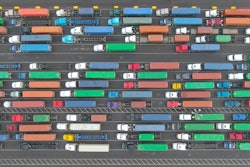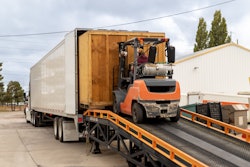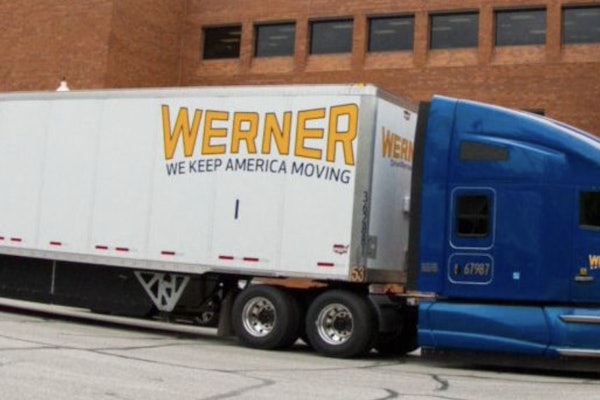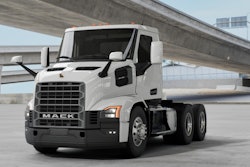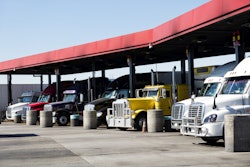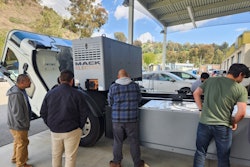‘The feasts are way too short, and the famines are way too long.’
When recently asked to describe the economic cycles of the truckload industry, that was the general summary of my answer. While this is a wonderful industry, it has a long history of financial cycles that create significant peaks and valleys.
Unfortunately, we have been sitting at the bottom of one of those valleys for some time now. The casual observer may ask a simple question: why? To understand this, you really need to understand the history of trucking in the United States.
 Dave Williams speaking at the Truckload Carriers Association Convention.
Dave Williams speaking at the Truckload Carriers Association Convention.
Not only did the government control commodities and lanes, but they also controlled the rates. The ICC was given the directive to provide the country with “just and reasonable” freight rates. But like many government programs that start with good intentions, there were unintended consequences. As a motor carrier, if your costs went up, all you had to do was submit a request for a rate increase to cover your increased costs and those rate increases were generally granted. It was a pretty good gig for those that were granted operating authority. The problem was that there was not a lot of incentive to be efficient, and freight costs were climbing. So, as part of the Motor Carrier Act of 1980, Congress made the decision to deregulate trucking in an effort to make our economy more competitive.
Under deregulation, the truckload industry as we know it today was born. These early truckload pioneers were highly entrepreneurial. They saw an opportunity to move full truckloads of freight very efficiently, without the expensive infrastructure and overhead that the previous models had relied upon. The shipping community soon jumped on the opportunity to move freight in larger shipments and reduce their costs in the process. From this shift in behavior, today’s large carriers such as J.B. Hunt, Swift, Schneider, Werner, and others grew and flourished.
From the early 1980s until the late 1990s, the truckload market grew exponentially, taking market share from the more inefficient carriers. The inability to adapt to this new market dynamic resulted in many of the carriers that dominated the landscape prior to 1980 being put out of business.
So why is all of this important?
It is important because for 20 years, part of the truckload model was to grow truck count. As fast as this new breed of truckload company added trucks, the freight shifted away from carriers that struggled to match their efficiency. All a truckload carrier had to do was get financed for more trucks.
At some point, probably in the late 1990s or early 2000s, the market share transition was complete, but the truckload model didn’t change. The entire trucking industry was actually growing at something close to GDP (2% to 4%), but truckload carriers were still trying to grow at a double-digit clip. What resulted was a simple case of supply and demand. The industry oversupplied capacity and found itself out of balance. As financial conditions deteriorated, motor carriers would eventually slow their appetite for buying trucks.
Then, when enough carriers went out of business and balance was restored, the carriers went back to buying trucks again – lots of them. Ever since then, the industry has cycled every couple of years between oversupply and balance. One of the longest and best stretches of trucking that this industry has ever seen was through the pandemic years. Why do you think this was? It started because consumers started buying more goods, but it lasted because the industry couldn’t buy trucks. They weren’t even available!
As manufacturers were constrained by supply chain and labor issues, the truckload carriers’ significant appetite for trucks was starved for a time.
The future of the truckload industry is bright, but the model is a little dysfunctional. The truckload industry currently hauls the lion’s share of freight in the greatest economy in the world. The industry has proven its ability to adapt and survive. There is no question that the resiliency of this industry will be tested again. As we head toward uncharted paths that include increased expectations of environmental improvements, shifts in generational consumer behaviors, workforce development challenges, unprecedented capital needs due to revenue equipment cost inflation, the growing influence of a world economy, hotbed policy debates around labor, and the implementation of emerging safety technologies, the industry has a lot on its plate.
Solving complex problems often requires us to go back to the basics. In this case we might consider some basic economics, and a little bit of history.



